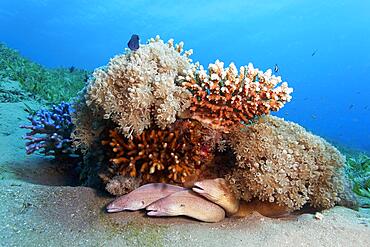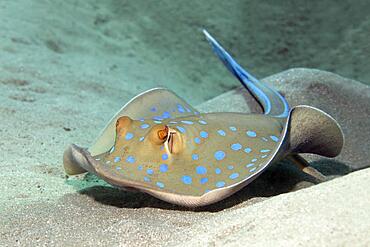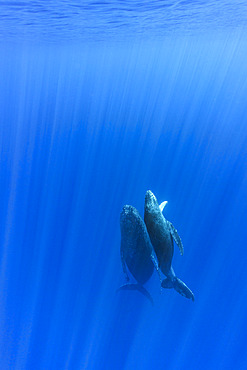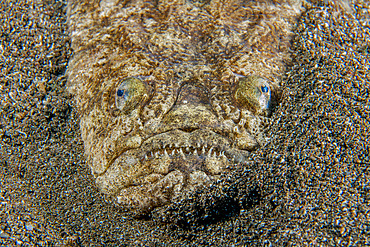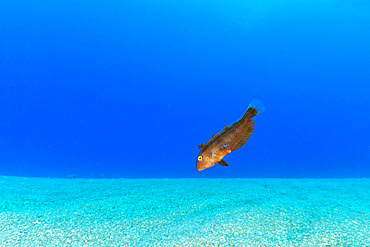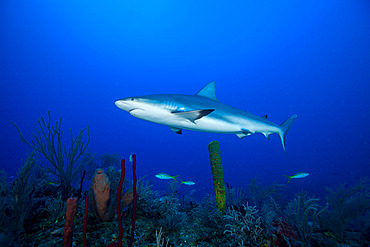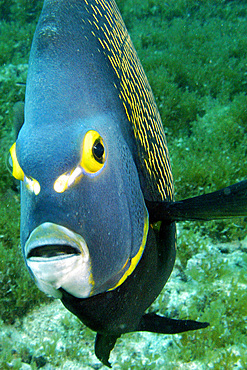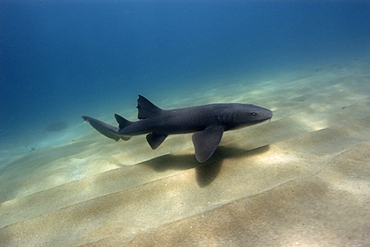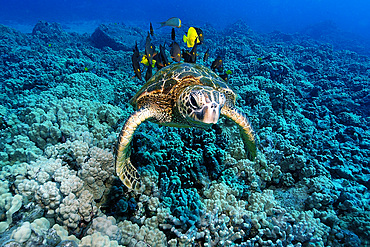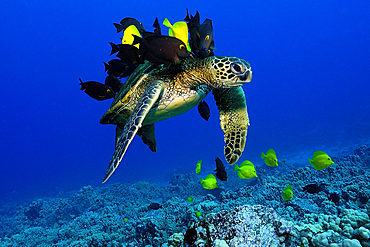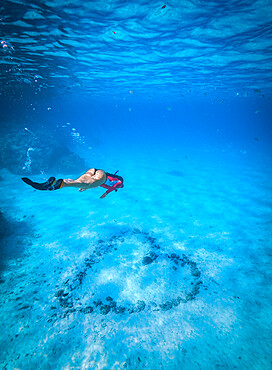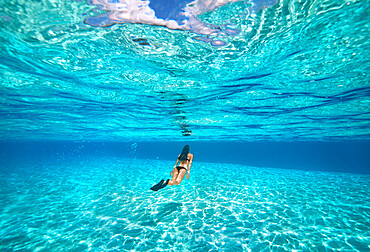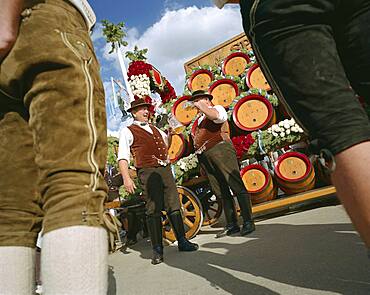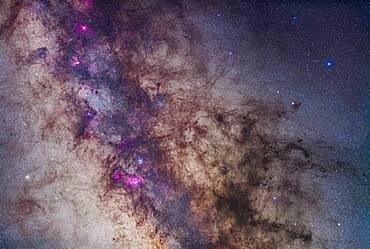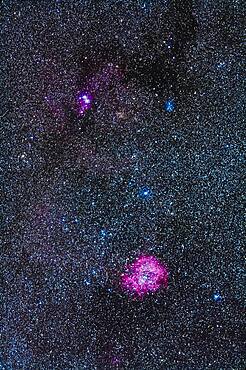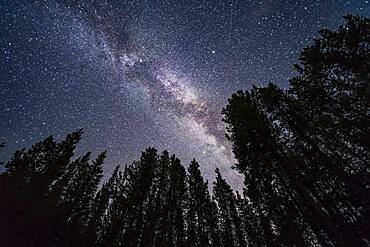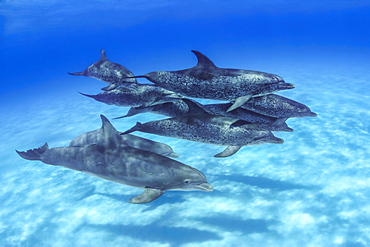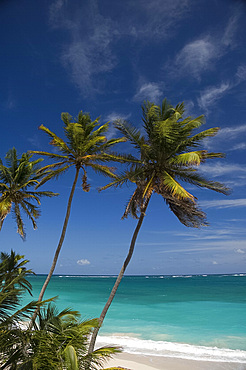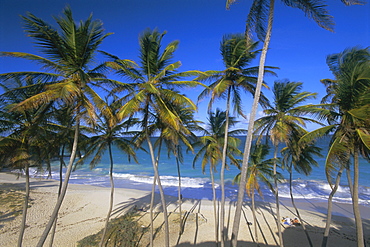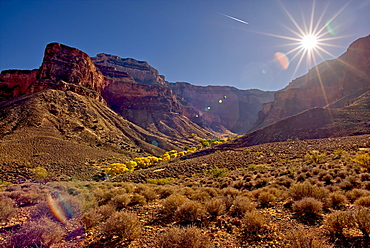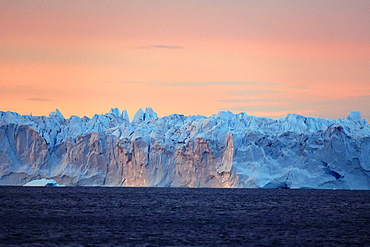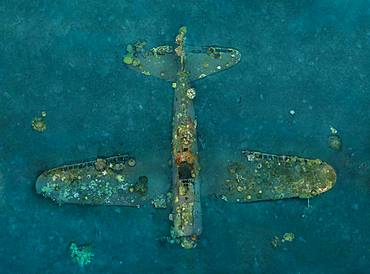Recent searches
Loading...
832-393704 - Geometric Moray (Gymnothorax griseus), also spotted moray eel, three, patch reef with soft corals (Xenia) and various stony corals, sandy bottom, seagrass bed, Red Sea, Aqaba, Kingdom of Jordan
832-393760 - Bearded Tassled Scorpionfish (Scorpaenopsis barbata) on sandy bottom, Red Sea, Aqaba, Kingdom of Jordan
832-393764 - Bluespotted ribbontail ray (Taeniura lymma) swimming over sandy bottom Red Sea, Aqaba, Kingdom of Jordan
860-289923 - American marine crocodile (Crocodylus acutus) on the detritic bottom of a mangrove channel in the Jardines de la Reina National Park, Cuba
860-289803 - Humpback whale (Megaptera novaeangliae) mother with calf rising from the bottom, Reunion, overseas department and region of the French Republic and an Indian Ocean island in East Africa
860-290263 - Atlantic stargazer(Uranoscopus scaber). He lives buried in the sand, with only his two eyes and his mouth sticking out of the bottom. Fish of the Canary Islands, Tenerife.
860-290012 - Pearly razorfish juvenile, (Xyrichtys novacula), over a sandy bottom, Ponza island, Italy, Tyrrhenian Sea, Mediterranean
860-289924 - Grey reef shark (Carcharhinus amblyrhynchos) above the bottom, Jardines de la Reina National Park, Cuba
1350-2445 - Coral reef during low tide in lagoon, Mili, Marshall Islands (N. Pacific).
1350-2428 - Green sea turtle, Chelonia mydas, Kailua-Kona, Hawaii, (Pacific)
1350-2478 - Large group of pink whipray or Tahitian stingray, Himantura fai, Rongelap, Marshall Islands, Micronesia
1350-2344 - French angelfish, Pomacanthus paru, Ilha rata, Fernando de Noronha national marine sanctuary, Pernambuco, Brazil (S. Atlantic)
1350-2571 - Hawaiian reef lobster, endemic, Enoplometopus occidentalis, Portlock, Oahu, Hawaii (N. Pacific)
1350-2371 - Nurse shark, Ginglymostoma cirratum, Fernando de Noronha, Pernambuco, Brazil, Atlantic Ocean
1350-2530 - Broadband cuttlefish, Sepia latimanus, in sandy bottom, Gato Island, Cebu, Philippines.
1350-2575 - Pink anemonefish on sea anemone, Amphiprion periderion, Rongelap, Marshall Islands (N. Pacific).
1350-2427 - Green sea turtle, Chelonia mydas, gets cleaned by yellow tangs, Zebrasoma flavescens and lined bristletooth, Ctenochaetus striatus, Kailua-Kona, Hawaii, (N. Pacific)
1350-2426 - Green sea turtle, Chelonia mydas, gets cleaned by yellow tangs, Zebrasoma flavescens and lined bristletooth, Ctenochaetus striatus, Kailua-Kona, Hawaii, (N. Pacific)
1350-2372 - Split image of Southern stingray, Dasyatis americana, on the sandy bottom and Pico Hill, Fernando de Noronha, Brazil, South Atlantic
1350-2477 - Split image of sand bottom and island, Rongelap, Marshall Islands, Micronesia
1350-2539 - Juvenile striped catfish, Plotosus lineatus, schooling and feeding on sandy bottom, Puerto Galera, Mindoro, Philippines.
1350-2471 - Wave breaking over shallow coral reef, Ailuk atoll, Marshall Islands, Pacific
1337-34 - An athletic woman free-dives to inspect a heart arranged with rocks on the bottom of the ocean, French Polynesia, South Pacific islands, Pacific
1337-37 - A young woman swimming underwater in clear blue shallow lagoon with a sandy bottom, French Polynesia, South Pacific islands, Pacific
832-393147 - Mountain lake, Christlessee with clear turquoise water, tree trunks at the bottom of the lake, Trettachtal, Allgaeu Alps, Allgaeu, Bavaria, Germany, Europe
832-393272 - Mammatus, hanging, bag-like source forms at the bottom of a Storm cloud (Cumulonimbus), Baden-Wuettemberg, Germany, Europe
832-393145 - Mountain lake, Christlessee, clouds of mist drift over the clear turquoise water, tree trunks at the bottom of the lake, Trettachtal, Allgaeu Alps, Allgaeu, Bavaria, Germany, Europe
832-393148 - Mountain lake, Christlessee with clear turquoise water, tree trunks at the bottom of the lake, Trettachtal, Allgaeu Alps, Allgaeu, Bavaria, Germany, Europe
832-393146 - Mountain lake, Christlessee with clear turquoise water, tree trunks at the bottom of the lake, Trettachtal, Allgaeu Alps, Allgaeu, Bavaria, Germany, Europe
1113-105383 - Entrainment of the hosts, Oktoberfest, Munich, Bavaria
832-391882 - Man standing at cracked earth at the bottom dried up lake, Poland, Europe
1350-77 - The Full Moon rising on December 22, 2018, the day after the winter solstice, in a perfectly clear sky and over the distant horizon to the northeast over the snow-covered prairie. Some cows are grazing at left! The top edge of the Moon has a green rim and the bottom edge a red rim, from atmospheric refraction. But it made for a Christmas-coloured Moon ornament on the horizon! The dark lunar mare and even the bright rays splashing from Tycho at bottom are visible.
1350-56 - This is the rich region in the centre of the constellation of Auriga with the Flaming Star Nebula, IC 405 at right, and the roundish IC 410 at bottom with the cluster NGC 1893. At top left is the star cluster Messier 38, with small NGC 1907 below it. The small nebula at left is IC 417 around the loose cluster Stock 8. The large elongated nebula at top is Sharpless 2-230. The colourful asterism of stars between IC 405 and IC 410 is the Leaping Minnow or Little Fish, aka Mel 31.
1350-126 - Splendours of the southern Milky Way from Vela (at top right) to Centaurus (at bottom left), including the Carina Nebula, Crux and Coal Sack, and Alpha and Beta Centauri. A part of the huge Gum Nebula is at far right. The False Cross is at right, with the large cluster NGC 2516, the Diamond Cluster, below it. The globular cluster Omega Centauri is at upper left.
1350-128 - A mosaic of the rich region in Sagittarius and southern Serpens, from the Small Sagittarius Starcloud (Messier 24) at bottom to Messier 16, the Eagle Nebula, at top, with a fainter nebula above it around the cluster NGC 6604. At centre is the Swan or Omega Nebula, Messier 17. The dark nebula below centre is Barnard 92.
1350-45 - This is the central area of Cygnus and its bright Milky Way starcloud surrounded by red nebulosity. At left is the star Sadr (gamma Cygni) with the complex of nebulosity catalogued as IC 1318. At centre is the distinct Crescent Nebula, NGC 6888, a expanding nebula created by winds from a hot Wolf-Rayet star. At bottom left is the star cluster Messier 29, though looking a little lost in the rich starfields here. At top is the cluster IC 1311, looking more obvious than M29 but not observed visually and included in the NGC catalog. Odd. At far right are the large and loose star clusters NGC 6883 and NGC 6871, the latter an obvious binocular sight. To the left of Sadr is the small cluster NGC 6910. The dark nebulas B145 and LDN 862 are at right. The small emission nebula at bottom is Sharpless 2-104.
1350-50 - Messier 101, the Pinwheel Galaxy in Ursa Major, a classic face-on spiral galaxy, large and obvious in binoculars. The odd galaxy at bottom is NGC 5474.
1350-178 - The asterism of the False Cross in Vela and Carina, at left, with Gamma Velorum, a bright blue supergiant star, at right. In between are faint arcs of nebulosity in the Gum Nebula. To the left of Gamma Velorum is the open star clister NGC 2547. Below the bottom star of the False Cross, Epsilon Carinae or Avior, is the large naked-eye star cluster NGC 2516. To the right of the right star of the False Cross, Delta Velorum, is the loose open cluster IC 2391.
1350-133 - The amazing area of the southern Milky Way in Carina and Crux, the brightest part of the Milky Way after the galactic core region. At right is the Carina Nebula, with the Southern Pleiades cluster, IC 2602, below it. The Football Cluster, NGC 3532, is at upper left of the Carina Nebula. At centre is the region of Lambda Centauri, with the star cluster NGC 3766, the Pearl Cluster, above the emission nebulosity. At left is the Southern Cross, with the dark Coal Sack at bottom left of the Cross, with thin tendrils extending to the right. To the left of Alpha Cruxis at the bottom of the Cross is the star cluster NGC 4609; aboive Alpha is NGC 4649. To the left of Beta Cruxis at the left side of the Cross is the Jewel Box Cluster, NGC 4755.
1350-10 - The colourful region around yellow Antares (bottom) in Scorpius and blue Rho Ophiuchi (top) in Ophiuchus. The nebulas are largely reflection nebulas, taking on the colour of the stars embedded in the nebulas. However, the field also contains a lot of emission nebulosity, hydrogen gas glowing red and magenta. Plus there are fingers of brown dark dusty nebulosity. It is one of the most colourful regions of the sky.
1350-130 - Particularly large groups of sunspots on the Sun on September 4, 2017. The group at bottom is AR 2673, the group at top is 2674. The small spot at left on the emerging limb is AR 2677, while the groups disappearing at right are AR 2675 (top) and AR 2776.
1350-59 - A wide-angle view of the Northern Hemisphere autumn Milky, from Aquila at bottom right in thw south, to Cassiopeia and Perseus at upper left in the northeast. Cygnus is at centre overhead on a late October evening. The Summer Triangle stars are at centre and right; the Andromeda Galaxy and Triangulum galaxies are at bottom left. The dark nebula Le Gentil 3, aka the Funnel Nebula, is at centre.
1350-127 - The region of the Milky Way in Puppis and Vela encompassing the vast Gum Nebula, a photographic object only. Sirius and Canis Major are at right; Canopus in Carina is at bottom. The False Cross and the open cluster NGC 2516 are at left.
1350-58 - This is the nebula rich region in the constellation of Monoceros the Unicorn with the dark Cone Nebula (left of centre) and the small V-shaped and bright Hubble's Variable Nebula at bottom, a reflection nebula that varies in form and brightness. Above the Cone Nebula is the triangular Christmas Tree Cluster, NGC 2264, here upside down as the bright blue star 15 Mon is the base of the tree. The large region of nebulosity is Sharpless 2-273. The V-shaped dark nebula above centre is LDN 1603.
1350-35 - A mosaic of the region around the Small Sagittarius Starcloud and Dark Horse dark nebula complex. The field takes in the Milky Way from the Lagoon Nebula at bottom to the Eagle Nebula at top left. In between from top to bottom are the Swan Nebula (M17), and the Small Sagittarius Starcloud (M24). Flanking the bright M24 starcloud are the large open clusters M23 (right) and M25 (left). At bottom left is the M22 globular star cluster. The prominent dark nebula at right is the large Pipe Nebula (B78) with the small Snake Nebula (B72) above it. The whole complex is visible to the naked eye as the Dark Horse.
1350-79 - The Belt and Sword region of Orion, with the Orion Nebula, Messiesr 42 and 43, at bottom. Below the left star of the Belt, Alnitak, is the famous Horsehead Nebula, while above it is NGC 2024, aka the Flame Nebula. At very top left is Messier 78, while part of Barnard's Loop arc across the field at left. The field is filled with other faint red emission and blue reflection nebulas. The large loose open cluster Collinder 70 surrounds the middle star of the Belt, Alnilam.
1350-47 - This is the Belt of Orion with its three blue stars across the top of the frame (L to R: Alnitak, Alnilam, and Mintaka), with the iconic Horsehead Nebula (aka B33) below Alnitak, with the dark Horsehead set against the bright nebula IC 434, aka Orion's Dagger. The pinkish nebula above Alnitak is NGC 2024, the Flame Nebula. The small blue reflection nebula left of the Horsehead is NGC 2023, with smaller IC 435 to the left of it. The field is filled with the large open cluster Collinder 70. The multiple star at bottom left of centre is Sigma Orionis. Many other smaller bits of reflection nebulas populate the field in and around the Belt.
1350-82 - The area of the Rosette Nebula (bottom) and Christmas Tree Cluster (top) in Monoceros with the Fornax Lightrack tracker and 200mm lens + Canon 5D MkII. The nebulosity at top includes the Cone Nebula.
1350-12 - A mosaic of the region around the centre of the Milky Way in Sagittarius and Scorpius. The field takes in the Milky Way from the Cat's Paw Nebula at bottom edge to the Eagle Nebula at top left. In between from top to bottom are the Swan Nebula (M17), the Small Sagittarius Starcloud (M24), the Trifid and Lagoon Nebulas (M20 and M8) and the open clusters M6 and M7. The prominent dark nebula at right is the large Pipe Nebula (B78) with the small Snake Nebula (B72) above it. The whole complex is visible to the naked eye as the Dark Horse.
1350-34 - All of Scorpius, plus parts of Lupus and Ara regions of the southern Milky Way. This area was directly overhead when I took this at about 4:30 am local time on April 6, 2014 from near Coonabarabran, Australia. The head of Scorpius is at top his tail at bottom though you could turn this image any direction and it would be correct as seen in the sky at this latitude, depending on the time of night. But in portrait mode like this north is at top. Along the Milky Way are numerous nebulas, including the False Comet area, the Cat's Paw area, and the colourful nebulas around Antares at top. The dark Pipe Nebula is at left of frame.
1350-13 - The centre of the galaxy area of the Milky Way toward Sagittarius and Scorpius, with the Sagittarius Starcloud right of centre, and the Lagoon Nebula (M8) left of centre. The Cat's Paw Nebula (NGC 6334) in Scorpius is at upper right, the Swan Nebula (M17) and Eagle Nebula (M16) are at lower left. To the right of them is the Small Sagittarius Starcloud (M24). At the very top is the Snake Nebula (B72). The main mass of dark nebula is the Pipe Nebula (B78). Above M24 at left is the open cluster M23 while below the M24 star cloud is the cluster M25. The globular M22 is at the bottom edge. At right of frame are the open clusters M6 (in the dark area of the Milky Way) and M7 (in the bright starcloud).
1350-20 - M31 Andromeda Galaxy, with TMB 92mm apo refractor and Borg 0.85x reducer/flattener for f/4.8 and Canon 20Da camera at ISO400 for 2 x 15 minute exposures. North is at bottom, south at top (better balance with this framing)
1350-137 - A horizon-to-zenith panorama of the winter consellations on a March evening as they set into the southwest. Orion is at bottom centre, with his Belt pointing down to Canis Major and up to Taurus. Gemini and Auriga are at top, in this case near the zenith overhead. The bright star clusters, M44, the Beehive, (at left) and M45, the Pleiades, (at right) flank the Milky Way. M45 is embedded in the Zodiacal Light. The star clusters M35 in Gemini and M41 in Canis Major are also visible as diffuse spots, as are several other star clusters. A couple of satellite trails are visible.
1350-52 - The summer Milky Way with the Summer Triangle stars through pine trees, shot from the Howse Pass Viewpoint at Saskatchewan River Crossing, Banff National Park, Alberta. Jupiter is the bright object at the bottom.
1350-152 - The constellation of Orion the Hunter, at right, and his two Hunting Dogs and their brightest stars: Procyon in Canis Minor (at left) and Sirius in Canis Major (at bottom).
1350-170 - The summer Milky Way overhead and through the Summer Triangle stars in July, looking up through trees in Banff National Park at Herbert Lake. Deneb is at top left, Vega at top right, and Altair is at bottom. The bright Cygnus star cloud is obvious. As are the dark lanes in the Milky Way, including the Funnel Nebula at top, aka Le Gentil 3.
1116-49706 - Mr. Fleetham spent an afternoon photographing these Atlantic Spotted Dolphin (Stenella plagiodon). During the several hours in the water a group of Atlantic Bottlenose Dolphin (Tursiops truncates) joined the company for nearly an hour of inter-species exchange, Bahamas
1116-49085 - Split view of the palm trees along the coastline and underwater, Maui, Hawaii, United States of America
1116-49082 - A male scuba diver in bright blue water, Makena, Maui, Hawaii, United States of America
1116-49664 - Although rarely seen in the ocean by divers, the Sandbar shark (Carcharhinus plumbeus) is likely the most numerous of all shark species found in Hawaii. This individual was photographed at the Maui Ocean Center Aquarium, Maui, Hawii, United States of America
1116-49669 - Divers exploring the prop and rudder at the stern of The Carthaginian, a Lahaina landmark, that was sunk as an artificial reef off Lahaina, Maui, Hawaii in December 2005, Maui, Hawaii, United States of America
1116-49728 - Divers on a WW II Corsair fighter plane off Southeast Oahu, Oahu, Hawaii, United States of America
1116-49086 - Silhouette of a scuba diver in a cave, Makena, Maui, Hawaii, United States of America
1116-49659 - Japanese Flying Squid (Todarodes pacificus), also knows as a Japanese common squid, in black water. This image was captured a mile off the island of Yap at night with the bottom 1000+ feet below. Hundreds of these squid passed by very quickly. This one paused just briefly for a portrait. It is one of the most abundant of the commercially valuable squid in the world, Yap, Micronesia
1113-104834 - Family camping at the bottom at mount Spitzkoppe, Damaraland, Namibia, Africa
83-13248 - Looking towards Valley End Farm at Bix Bottom in the Chiltern Hills near Henley, Bix Bottom, Henley-on-Thames, Oxfordshire, England, United Kingdom, Europe
832-389280 - Green turtle (Chelonia mydas) or green turtle, swimming against the light over sandy bottom, Andaman Sea, Mu Ko Similan National Park, Similan Islands, Phang Nga Province, Thailand, Asia
1311-233 - A large petroglyph covered boulder in dry Stillman Lake at the bottom of the Verde River Canyon in Paulden, Arizona, United States of America, North America
149-5798 - Palm trees and surf at Bottom Bay on the east coast of Barbados, Windward Islands, West Indies, Caribbean, Central America
149-5808 - White sand and surf at Bottom Bay on the east coast of Barbados, The Windward Islands, West Indies, Caribbean, Central America
832-387959 - Two Reef manta rays (Mobula alfredi) swims with open mouth over sandy bottom, from the front, Great Barrier Reef, Coral Sea, Pacific Ocean, Australia, Oceania
252-10259 - Palm trees and beach, Bottom Bay, Barbados, West Indies, Caribbean, Central America
832-384802 - Tawny nurse shark (Nebrius ferrugineus) lies on a sandy bottom, Indian Ocean, Maldives, Asia
832-387221 - West Indian manatee (Trichechus manatus), overgrown with moss, resting on the bottom, Grass perch, Green sunfish (Lepomis cyanellus) eats moss from manti, cleanerfish, Three Sisters Springs, Manti Sanctuary, Crystal River, Florida, USA, North America
1116-47732 - A young Green sea turtle (Chelonia mydas) swims down to reef after taking a break at the surface, Makena, Maui, Hawaii, United States of America
1116-47724 - Fish and plastic water bottles underwater, composite image
1112-4671 - Small village in the bottom of Wadi Bani Khalid, Sultanate of Oman, Middle East
1247-223 - Borovets Ski Resort, bars and eateries at the bottom of the ski hill, Bulgaria, Europe
1247-224 - Borovets Ski Resort, bars and eateries at the bottom of the ski hill, Bulgaria, Europe
1247-222 - Borovets Ski Resort, bars and eateries at the bottom of the ski hill, Bulgaria, Europe
1116-46836 - The larval stage of a tube anemone (Cerianthus sp), likely around 30 days old at this point, will settle on the bottom at approximately 100 days. Photographed at night one mile off the island of Yap, Yap, Federated States of Micronesia
1116-46835 - At just two inches in length this appears to be the larval stage of a flounder. This image was captured a mile off the island of Yap at night with the bottom 1000+ feet below, Yap, Federated States of Micronesia
1116-46542 - Banded Sea Urchin (Echinothrix Calamaris) On A Sandy Bottom Off The Kona Coast, Kona, Island Of Hawaii, Hawaii, United States Of America
1311-181 - Bright Angel Canyon viewed north of the south rim with bright yellow trees in the bottom of the canyon (Indian Gardens), Grand Canyon National Park, UNESCO World Heritage Site, Arizona, United States of America, North America
860-288642 - Young Arctic Foxes (Alopex Lagopus) in the tundra, at the bottom the Scoresbysund, Jameson land, North East Greenland
860-288630 - Arctic Foxes (Alopex Lagopus) family in the tundra, at the bottom the Scoresbysund, Jameson land, North East Greenland
860-288640 - Muskox (Ovibos moschatus) solitary male in the tundra, bottom Scoresbysund, Jameson Land, Northeast Greenland
860-287782 - Serac at sunset, a huge serac of a hundred meters long and 30 meters high has just detached from a glacier front at the bottom of Scoresby Sund, It will break into several large icebergs, Greenland
860-287785 - Low tide at the bottom of Scoresby Sund on the Bear Archipelago, Greenland
860-287783 - Landscape of the Bredning Hall at the bottom of Scoresby Sund, from one of the islands of the Bear Archipelago, to the bottom of the great basalt cliffs of Greenland
860-288651 - Kayak at the bottom of Scoresbysund, North East Greenland
860-287968 - Scuba diver on the sandy bottom surrounded by shoal of Big-eye jacks (Caranx sexfasciatus), Cabo Pulmo Marine National Park, Baja California Sur, Mexico
860-288631 - Arctic Foxes (Alopex Lagopus) family in the tundra, at the bottom the Scoresbysund, Jameson land, North East Greenland
860-287777 - Sunrise on the bottom of Scoresby Sund from the northernmost island of the Bear Archipelago, Greenland
860-287781 - Male and lone muskox (Ovibos moschatus) on one of the archipelago islands at the bottom of Scoresby Sund, GreenlandIt must have arrived here in winter through the ice floe
1116-44004 - Colossus Of Ramses Ii (Top), Queen Nefertari (Bottom), Sun Temple, Abu Simbel Temples, Egypt
860-287442 - Tara Pacific expedition - november 2017 Kimbe Bay, papua New Guinea, Zero wreck: Coral growth on this wreck is from a period of 74 years ! D: 15 m The ZERO, is a Japanese WW2 fighter plane wreck. This Zero wreck was discovered in January 2000 by local William Nuli while he was freediving for sea cucumbers. He asked the Walindi Plantation Resort dive team if they might know what it was, and when they investigated they uncovered the intact wreck of a Zero fighter, resting on a sedimented bottom in 15 m depth. This World War II Japanese fighter is almost completely intact. The plane is believed to have been ditched, the pilot is believed to have survived, but was never found on the island. He never returned home. Maybe he disappeared in the jungle? On 26th December 1943, during the battle of Cape Gloucester, the Japanese pilot made an emergency landing, ditching his Mitsubishi A6M Zero plane into the sea approximately 100m off West New Britain Province. The plane was piloted by PO1 Tomiharu Honda of the 204st K?k?tai. His fate is unknown but it is believed the he made a controlled water landing after running out of fuel and survived. Although he failed to return to his unit, the plane was found with the throttle and trim controls both set for landing and the canopy was open. There are no visible bullet holes or other shrapnel damage and the plane is still virtually intact after over 70 years underwater. It is a A6M2 Model 21 Zero, made famous for its use in Kamikaze attacks by the Japanese Imperial Navy. The wreck has the Manufacture Number 8224 and was built by Nakajima in late August 1942.
860-287440 - Tara Pacific expedition - november 2017 Zero wreck, vertical view Orthomosaic from 3D photogrammetry (13500 x 10000 px). D: 15 m Kimbe Bay, papua New Guinea, Coral growth on this wreck is from a period of 74 years ! The ZERO, is a Japanese WW2 fighter plane wreck. This Zero wreck was discovered in January 2000 by local William Nuli while he was freediving for sea cucumbers. He asked the Walindi Plantation Resort dive team if they might know what it was, and when they investigated they uncovered the intact wreck of a Zero fighter, resting on a sedimented bottom in 15 m depth. This World War II Japanese fighter is almost completely intact. The plane is believed to have been ditched, the pilot is believed to have survived, but was never found on the island. He never returned home. Maybe he disappeared in the jungle? On 26th December 1943, during the battle of Cape Gloucester, the Japanese pilot made an emergency landing, ditching his Mitsubishi A6M Zero plane into the sea approximately 100m off West New Britain Province. The plane was piloted by PO1 Tomiharu Honda of the 204st K?k?tai. His fate is unknown but it is believed the he made a controlled water landing after running out of fuel and survived. Although he failed to return to his unit, the plane was found with the throttle and trim controls both set for landing and the canopy was open. There are no visible bullet holes or other shrapnel damage and the plane is still virtually intact after over 70 years underwater. It is a A6M2 Model 21 Zero, made famous for its use in Kamikaze attacks by the Japanese Imperial Navy. The wreck has the Manufacture Number 8224 and was built by Nakajima in late August 1942.
